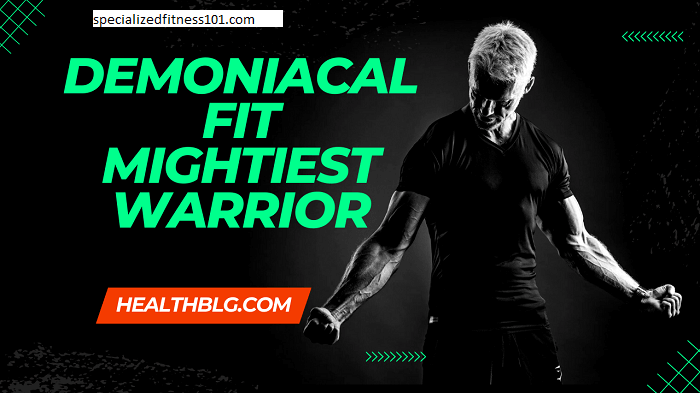The Demoniacal Fit of the Mightiest Warrior: A Study in Fury, Power, and the Dark Side of Heroism:
The word “demoniacal fit” immediately evokes a powerful warrior possessed by fury and primal rage; it can then be followed throughout history, mythology, and literature as an icon of immense inner turmoil. It speaks to a psychological and supernatural state whereby the mind of the warrior becomes entangled with straining emotions, often throwing them to the precipice of insanity while unlocking unimaginable devastating power. The “mightiest warrior” refers to any figure, taken from the myth, legend, or history books, who has emerged renowned for unbeatable strength, savagery, and expertise but whose darker, uncontrollable impulses define their tragic or transcendent powers.
This paper deals with the notion of the “demoniacal fit” and its relevance to the epic tales of legendary warriors. To achieve this, we will search for mythological archetypes, historical figures, and literary examples that best describe this state of destruction power. It is not a fit of frenzy of violence, but the biggest conflict that pushes the human aspect against the monstrous in the warrior, which one would blur with the lines of heroism and villainy.

The Demoniacal Fit:
The “demoniacal fit” is sometimes called a psychical condition in which the individual appears to be possessed by a power or influence more than human, in this case, demonic or supernatural. Here, he displayed unnatural strength and swiftness beside fighting machinery; yet at such times, his emotions were overpowered by anger, hatred, and a deep-seated inner anguish. Typically, the state is known to be followed by violence and a thirst for blood with a thirst for retribution, making him an unstoppable force of destruction that even the mightiest adversary could not hold ground against.
The Greatest Warrior: A Definition:
Demoniacal Fit:
The greatest warriors come in all shapes and forms within cultures and mythologies. There are warriors honored not just for physical strength but for facing or conquering challenges that could bend a man to his knees under normal conditions. They can be human, half-divine, and even supernatural, each personifying some ideal concepts of power, courage, and honor. However, their greatness is constantly tainted or complicated by flaws originating from themselves, thus making them more relatable and human.
In discussing the “mightiest warrior,” a requirement to establish virtues and vices that exist inside this character must be met. The characters very often symbolize the duality of the hero’s journey, the internal fight as well as the outer tension he is up against. A warrior is more defined by victory on the battlefield as well as how well he can deal with the inner demons and their moral dilemmas. This demonic convulsion, therefore, gives a glimpse into the psyche of the warrior: how they have successfully balanced between their heroic potential and dark impulses if at all.
Warriors in Mythology and History:
Demoniacal Fit:
1. Achilles: The Greek Hero of Anger
Maybe one of the most symbolic examples of a warrior who succumbed to rage is Achilles, the legendary hero of Homer’s Iliad. In this epic tale, Achilles is best known for his strength, his skill, and his near-invincibility. His wrath—his “wrath,” in fact—becomes his greatest defining characteristic. In Homer’s Iliad, a “demoniacal fit” sets Achilles on Agamemnon, the leader of the Greeks, who has taken Achilles’ war prize, Briseis. This position places Achilles in a traitorous position, causing him to step out of the battle, but also becomes the trigger for the storm of anger that propels him back onto the battlefield.
In his fit of demonic madness, Achilles becomes an unstoppable power of nature who ruthlessly slays all enemies before him. Even a noble prince of Troy, Hector, is killed amid a frenzy not really about military strategy, but rather pure vengeance. No scene in classical literature is more chilling than when Achilles draws Hector’s body around the walls of Troy in a demonstration of how the warrior, in his wrath, loses all sense of humanity.
On the other hand, Achilles’ anger is his enemy. He could not keep himself from restraining his passion, where which hurt him as much as it hurt other people around him whom he killed. So, he falls into the very category of a tragic hero despite all the heroism he delivers.

2. Beowulf: The Indomitable Viking Hero
Demoniacal Fit:
Another archetype of the mightiest warrior is the protagonist in the epic Anglo-Saxon poem Beowulf. The strength and courage shown by Beowulf while defeating the monster Grendel, Grendel’s mother, and even a dragon cannot be matched. But such is their nature, the might of heroes holds a cost with it.
Beowulf’s battles, especially with Grendel and the dragon, fall into the domain of “demoniacal fits,” as his compulsive urge to demonstrate his strength and do great deeds conquers him. His battle with Grendel shows something barbarous in its raw, almost bestial, quality that stresses his spirit as a warrior. For example, when he finally comes face to face with the dragon in his old age, the same compulsion overcomes him to save his people at all costs, including his life.
Here, just as it is in Beowulf, the power is tied to a notion of pride, honor, and a sense of duty,w whichmakes him choose decisions that will ultimately prove fatal for him. The demoniac fit of the warrior in Beowulf serves to symbolize the price paid for hubris and being greater than the boasts themselves.
3. Loki and the Norse Pantheon
Demoniacal Fit:
Another rather more complex figure associated with fits of rage is the Norse god Loki, albeit in this capacity as a god, the role of a “warrior” is somewhat complicated by his status. Loki is a trickster god whose actions frequently disrupt order, and fits of fury are sometimes fueled by personal grievances and a need to assert power. That represents his conversion from a friend to an enemy of the gods: it shows how unchecked wrath can destroy even the gods themselves.
The “demoniac fit” of Loki can probably be best seen in his complicity in the killing of the god Balder. While he is overcome by jealousy and vengefulness, it is Loki who plots the murder of Balder, and it is the last climax that will conclude with the end of the world at Ragnarok. Loki’s character is, in effect a synonym for the totality of potential destruction caused by unleashed anger and the essence of betrayal.
Psychological and Symbolic Significance of the Demoniacal Fit:
Thus, the demoniacal fit is, on one side, an outward phenomenon of violence, but it is a psychological and symbolic exploration into the darker recesses of the mind of the warrior. In this way, then, one can state that the rage of the warrior turns out to be an allegory for the inner struggle between powers and restraints, between order and chaos. This, in turn, would fall perfectly with the general scheme of action of the tragic hero, which cannot even potentially be reconciled among himself and hence destructs.

Still, in modern readings, the demoniacal fit finds another meaning as metaphoric about the after-effects of trauma, especially the psychological wounds of war. He is the warrior lost in rage, bent at the collapse of a man who is disheartened by the realization that he can never revert to a state of being again because of the stains of war. The theme is very deep in the current narratives on PTSD and the emotional impact of violence.

